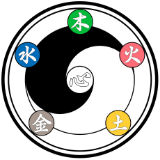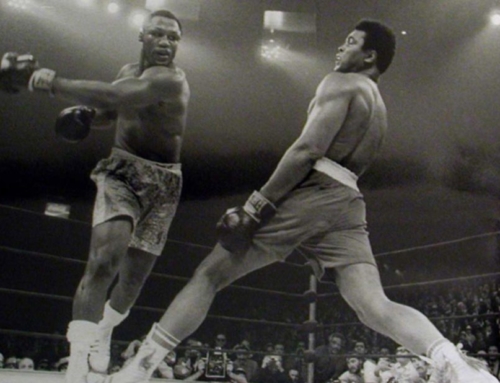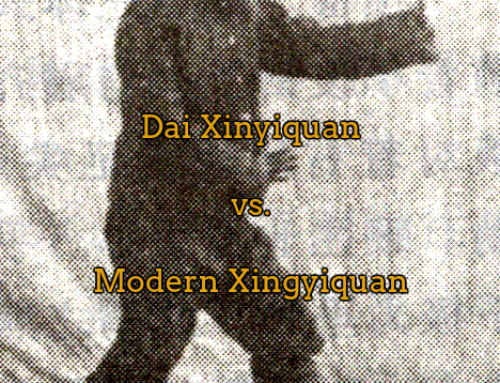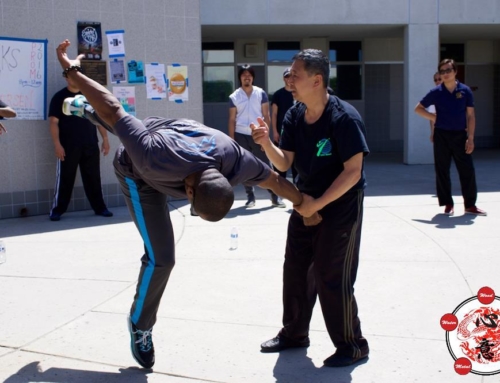There are many videos that came out recently on MMA versus internal and traditional martial arts, and the internal/traditional martial arts masters or practitioners in these videos are getting beat or knocked out very easily by these MMA fighters. I’m writing this blog post to address the issue of idealism specifically on internal martial arts, the impracticality of these arts in terms of practical martial skill, and the necessary skills needed to make any martial arts practical.
Internal martial arts, in general, have a big element of idealistic pursue if to view them through the perspective of practical martial skill. The three widely recognized and practiced internal martial arts worldwide are Taijiquan, Baguazhang, and Xingyiquan, and these arts share the common training of developing Jing, Qi, Shen, and the cultivation of dantian to drive the qi and internal power, resulting in a very internalized power generation, and this process takes at least many years to develop if trained correctly. The foundation training normally required to develop this internal power is through combining stance work with breath work, such as Taijiquan’s Hunyuan stance, Baguazhang’s circle walking, or Xingyiquan’s Santi stance. Also, all the techniques in internal martial arts that are created have to express this internalized power generation, otherwise, they would just be empty techniques without power behind them.
Among these three internal martial arts, they have their technical and strategic differences that make each art unique and stand on its own. Taijiquan is known for utilizing the concept of rooting and yielding to neutralize the opponent. Baguazhang is known for utilizing the concept of circling around your opponent or using evasive footwork. Xingyiquan is known for utilizing the concept of linear attack with explosive power and short power to penetrate force through your opponent. In my opinion, the practice and utilization of these concepts and the manifestation of these concepts in action are idealistic.
The skills that are developed from practicing internal martial arts, based on the principles and technical strategies explained above, are not the kind of skills needed to gain practical martial ability. What we normally see in internal martial arts usage demonstrations is a skilled person making contact with a less skilled person, causing the less skilled person to be off-balanced. Or the skilled person is able to neutralize a push by the less skilled person and stay balanced, this is the result of the skilled person being able to maneuver his own force from the inside of his body, causing the force to freely move around or making the force to disappear and appear in any part of the body from the inside. Therefore, the less skilled person applying the push cannot create any physical effect because the force behind the push is not actually being applied onto the force of the skilled person internally. It is like exerting force against air, then this exertion of force has no use.
The more internal power a person develops, the less physical effort it takes for that person to off-balance another person. Also, greater internal power amplifies the effect of the off-balance, sometimes resulting in effortlessly tossing people several feet away with very little physical movement involved. This type of skill developed by internal martial arts practitioners is in a way just showing a deep understanding and mastery of body structure manipulation. It is not directly related to practical martial ability.
Another thing to consider when talking about applying internal martial arts is the conditions required for the body structure manipulation to take effect. On the one hand, body structure manipulation requires a certain degree of relaxation, both mental and physical, for awareness, sensitivity, and sinking the qi to take place. In any fighting scenario, there is no condition for the body to relax and to sink the qi. Any trained person throws a punch or a combination of punches at you with the intention to knock you out, you have to deal with the speed and power behind the punch. A punch by a trained person could reach you in less than a second with a lot of power behind it, and so making it unrealistic for you to think about making contact with the punch first, feel that person’s structure, and then based on this structural feedback from making the contact, you could then manipulate that person’s structure either to neutralize the force behind the punch or to apply your force on that person’s structure.
On the other hand, body structure manipulation requires static compliance. What I mean by this is that when someone feeds or applies force on you, you could play with that force and maneuver around that force causing that person to be off-balanced. For this manipulation to take effect, it means that when you respond and deal with the initial force that is being applied, the person applying the initial force has to maintain the exertion of that force, otherwise, you would not have any force to work with. Also, for your responding force to have a good effect on the structure of that person, that person has to maintain the direction of that initial force. If these two conditions, maintaining the exertion and direction of force, do not exist, then it would be very difficult to manipulate another person’s structure. This is what we see when two relatively equal skilled internal martial arts practitioners touch hands, both of them would be constantly changing the amount of force that they exert and the direction of force. Under this scenario, it would not be easy to do body structure manipulation, resulting in both practitioners trying to push and shove with some muscular tension, or it would turn into something more like a wrestling match. This manipulation concept also applies to strikes.
In evaluating the practical ability of any martial arts, here are some important skills that have to be developed.
- Good combination of power, force, and strength to match or exceed the power, force, and strength of your opponent
- Strong physical conditioning such as cardio and ability to take impact
- Good head movements that can be utilized to evade strikes
- Good reflex in evading strikes utilizing the movement or rotation of the body
- Mobility in hip joints or Kua and elasticity in the spine that can be utilized to reduce the impact of incoming strikes
- Good speed in executing strikes and the agility of the footwork to control the space between you and your opponent
- Solid striking techniques acquired through boxing, kickboxing, Thai boxing, etc., which is very unlikely to be developed from training only internal or traditional martial arts techniques
- Strong lower base and good wrestling techniques to avoid takedowns
From a realistic point of view, practitioners learning modern fighting arts would directly gain these practical skills with enough time put into their training. However, there are certain physical qualities developed through internal martial arts that would enhance these practical skills, but it is not a replacement for learning modern fighting arts. This is based on my experience in training both modern striking arts and internal martial arts.
These skills addressed here are not meant to be comprehensive, but they come to my mind when I think about this issue of practicality in training martial arts. Certainly, many people practice internal martial arts for reasons other than practical martial skill, which is fine, as long as they can differentiate which part of the training is practical and which part of the training is not practical, and don’t claim something that is not reflected in the result of their training. For those of you that are practicing internal martial arts to gain martial skill but without any modern fighting arts knowledge, it is probably a good idea to acquire some skill in modern fighting arts while learning internal martial arts.




Leave A Comment
You must be logged in to post a comment.